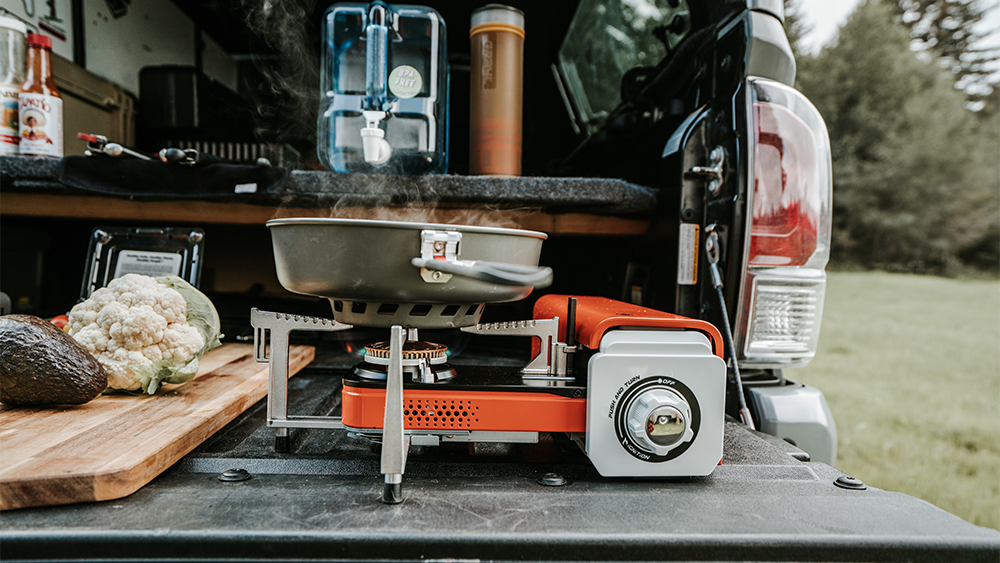Stainless Steel vs. Aluminum Stockpots: Key Differences, Pros, and Cons
Stainless Steel vs. Aluminum Stockpots: Key Differences, Pros, and Cons
Introduction
Whether you're preparing a seafood boil, cooking a large batch of soup, or getting ready for a family barbecue, a reliable stockpot is essential for any outdoor or large-scale cooking event. At GasOne, we offer a range of stockpots in both stainless steel and aluminum—each with its own unique advantages. But how do you choose between them? In this article, we’ll explore the key differences, pros, and cons of stainless steel and aluminum stockpots, helping you make the best choice for your cooking needs.
- Material Overview: Stainless Steel vs. Aluminum
Before diving into the specific advantages and drawbacks, it's important to understand the key properties of both materials.
- Stainless Steel Stockpots: Stainless steel is known for its durability, resistance to corrosion, and non-reactive surface, which means it won't interact with acidic foods like tomatoes or vinegar-based dishes. GasOne’s stainless steel stockpots are designed to withstand heavy-duty use and last for years.
- Aluminum Stockpots: Aluminum, on the other hand, is lightweight, an excellent conductor of heat, and typically more affordable than stainless steel. GasOne’s aluminum stockpots are perfect for those who want even heating without the added weight of steel.
- Heat Conductivity and Cooking Performance
One of the most critical factors in choosing a stockpot is heat conductivity, as it affects how evenly and quickly your food cooks.
- Aluminum Stockpots: Aluminum is a superior conductor of heat compared to stainless steel. This means that aluminum stockpots heat up more quickly and distribute heat more evenly. This is particularly beneficial for boiling large quantities of water or cooking dishes that require consistent temperature control, such as stews or seafood boils. GasOne’s aluminum stockpots are perfect for fast and even heating when time is of the essence.
- Stainless Steel Stockpots: Stainless steel, while more durable, is not as efficient at conducting heat. This can lead to hot spots in some cases, especially if the pot doesn't have a layered or encapsulated base. Many premium stainless steel pots, including some of GasOne’s stainless steel stockpots, feature a multi-ply construction with an aluminum core to improve heat conductivity, making them a more versatile choice.
- Durability and Longevity
Durability is a key consideration, especially if you’re cooking large meals frequently or using your stockpot in rugged outdoor conditions.
- Stainless Steel Stockpots: Stainless steel is incredibly durable and resistant to rust, scratches, and dents. This makes it ideal for outdoor use, heavy-duty cooking, or settings where your cookware might face some rough handling. GasOne’s stainless steel stockpots can handle high heat and exposure to the elements without warping or degrading over time. Plus, they can last a lifetime with proper care.
- Aluminum Stockpots: While aluminum is durable, it is more prone to dents and scratches compared to stainless steel. Additionally, aluminum can react with acidic foods, which may alter the flavor or appearance of your dish. However, anodized aluminum, a popular option in GasOne’s stockpot lineup, is much more resistant to wear and corrosion, combining lightweight convenience with improved durability.
- Weight and Portability
For outdoor cooking, weight can be an important factor, especially if you're transporting your gear to a campsite or cooking event.
- Aluminum Stockpots: Aluminum is the clear winner when it comes to weight. It's much lighter than stainless steel, making it easier to carry, move, and handle during cooking. If you're cooking in bulk or need to frequently move the pot, GasOne’s aluminum stockpots offer a lightweight option without sacrificing cooking capacity.
- Stainless Steel Stockpots: Stainless steel is heavier, which could be a drawback if you need to transport it frequently. However, the added weight can also provide stability when cooking, especially for large, liquid-heavy dishes like soups or seafood boils. GasOne’s stainless steel stockpots offer rugged durability but might be less portable than their aluminum counterparts.
- Maintenance and Cleaning
Cleaning and maintenance are important factors, especially if you're cooking often and want to spend less time scrubbing pots.
- Stainless Steel Stockpots: One of the big advantages of stainless steel is its non-reactive surface. You can cook any type of food, including acidic or salty dishes, without worrying about damaging the pot or affecting the taste. GasOne’s stainless steel stockpots are dishwasher-safe, and any stains or residue can typically be removed with a gentle scrubbing or a stainless steel cleaner.
- Aluminum Stockpots: Aluminum requires a bit more care. It can be prone to staining, especially with acidic or salty dishes, and is typically not dishwasher-safe. However, anodized aluminum pots, such as those found in GasOne’s aluminum stockpot range, are much easier to clean and resist the common staining and discoloration that raw aluminum can experience.
- Price and Affordability
Price is always a factor when purchasing cookware, and both materials offer different price points to consider.
- Stainless Steel Stockpots: Stainless steel is usually more expensive due to its durability and long-lasting properties. However, this investment often pays off over time since a well-cared-for stainless steel stockpot can last for decades. GasOne’s stainless steel stockpots are priced competitively, offering excellent value for a durable, high-quality pot.
- Aluminum Stockpots: Aluminum stockpots tend to be more affordable. They are a great option for those looking to get a large-capacity stockpot without breaking the bank. Despite their lower price point, GasOne’s aluminum stockpots offer excellent performance, especially for occasional or recreational use.
- Versatility: What’s Best for Your Cooking Style?
Consider what kinds of dishes you plan to make when choosing between stainless steel and aluminum stockpots.
- Aluminum Stockpots: Best for high-heat, fast-cooking methods, aluminum stockpots are great for seafood boils, soups, stews, and any dish that requires rapid heat distribution. For outdoor events, where quick and even heating is key, GasOne’s aluminum stockpots are an ideal choice.
- Stainless Steel Stockpots: If you're cooking a wider variety of dishes, including acidic foods or recipes that require long simmering times, a stainless steel pot may be a better fit. GasOne’s stainless steel stockpots offer the durability and non-reactive surface needed for more diverse cooking tasks.
Conclusion
In the end, the choice between a stainless steel and aluminum stockpot comes down to your specific cooking needs. If you're looking for quick heat distribution and lightweight portability, GasOne’s aluminum stockpots offer excellent performance at an affordable price. However, if you need long-lasting durability, a non-reactive surface, and versatility, GasOne’s stainless steel stockpots are a great investment.
Both options bring their unique strengths to the table, so consider your cooking style, budget, and usage frequency when making your decision. No matter which one you choose, GasOne has a range of high-quality stockpots that will enhance your outdoor cooking experience.












Leave a comment